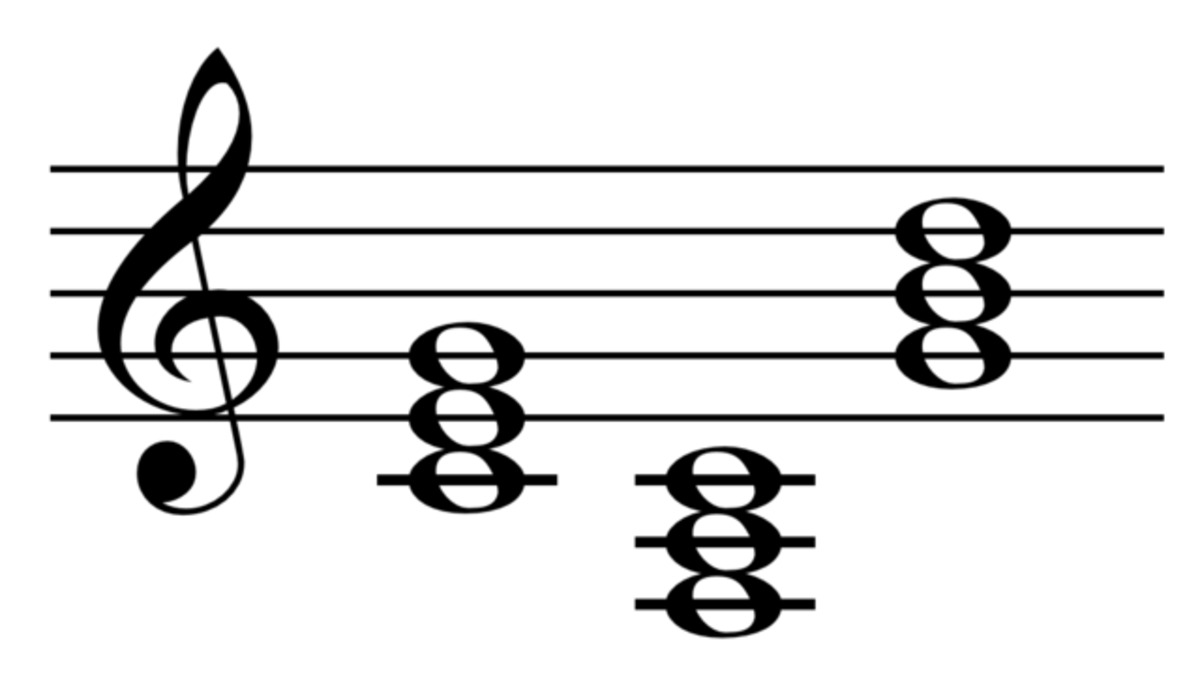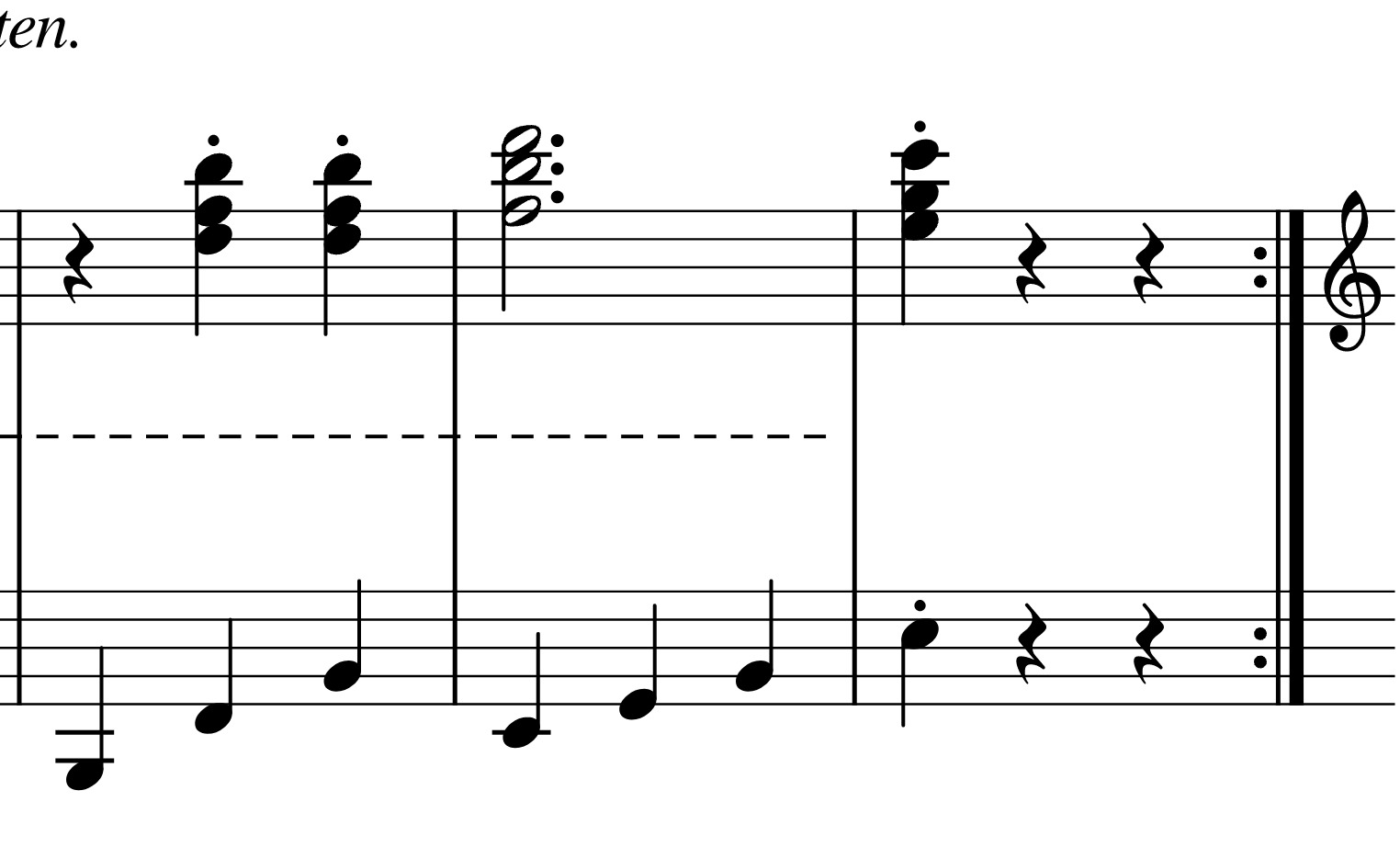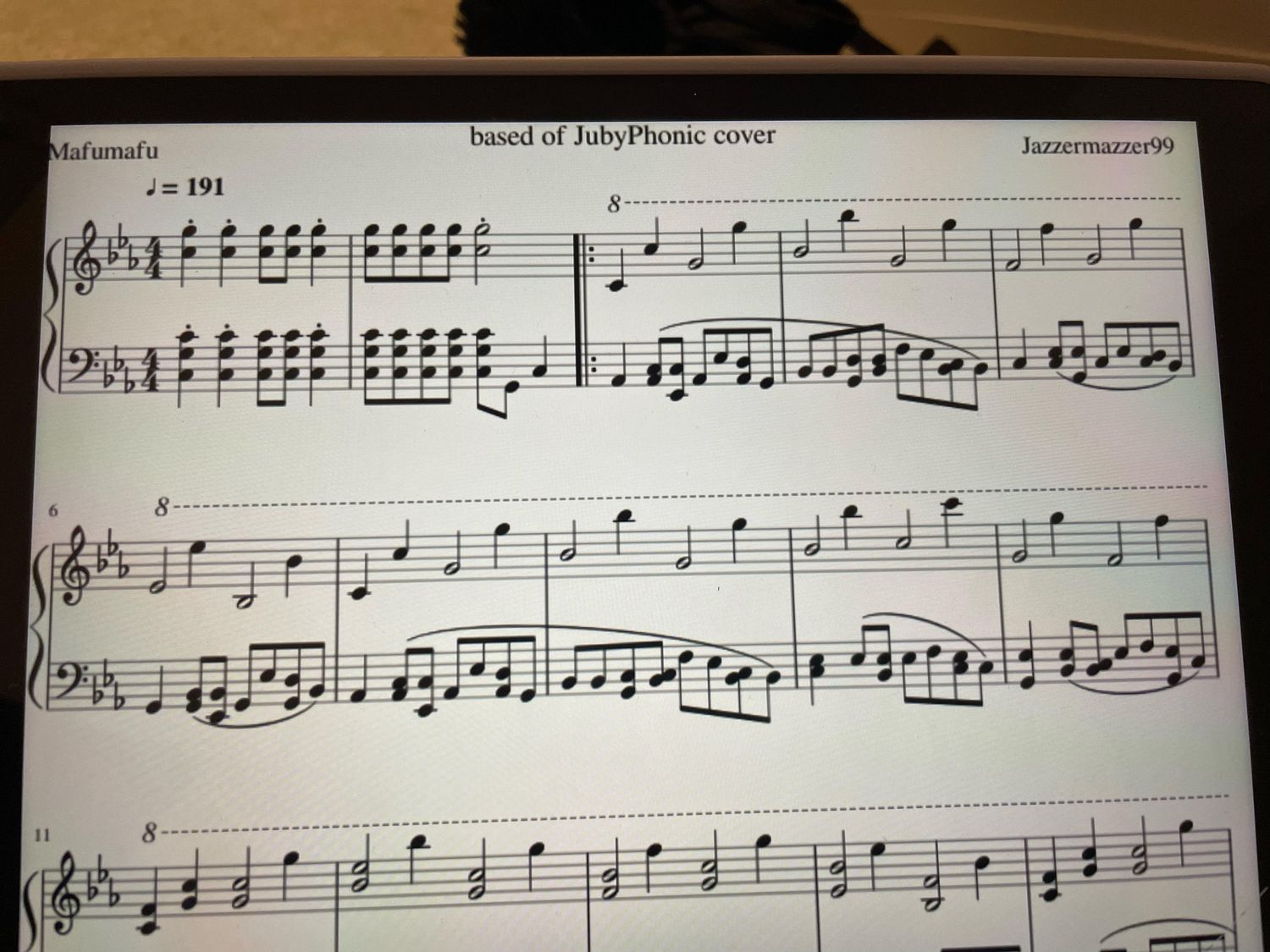Home>Production & Technology>Music Theory>What Is A Tritone Music Theory


Music Theory
What Is A Tritone Music Theory
Published: January 31, 2024
Explore the concept of tritone in music theory. Learn how tritones are formed, their significance in harmonic progressions, and how they create tension and resolution in compositions. Enhance your understanding of music theory with this comprehensive guide.
(Many of the links in this article redirect to a specific reviewed product. Your purchase of these products through affiliate links helps to generate commission for AudioLover.com, at no extra cost. Learn more)
Table of Contents
Introduction
Welcome to the fascinating world of music theory! Whether you’re a musician, a music lover, or someone who is simply curious about the intricacies of music, understanding the foundational concepts of music theory can greatly enhance your appreciation and enjoyment of the art form. In this article, we will delve into one such concept: the tritone.
The tritone is a unique and intriguing interval that has captured the attention of composers, theorists, and musicians throughout history. Its distinctive sound and role in harmony make it a fundamental element in various musical genres, from classical to jazz to contemporary music.
In this exploration of the tritone, we will uncover its definition, historical context, characteristics, and its significance in both traditional and contemporary music. We will also touch upon the concept of tritone substitution in jazz and examine the resolution of the tritone in traditional harmonic progressions.
Whether you’re a beginner or a seasoned musician, this article aims to provide a comprehensive understanding of the tritone in music theory. So, let’s embark on this musical adventure and unravel the mysteries of the tritone!
Definition of Tritone in Music Theory
The tritone, also known as an augmented fourth or diminished fifth, is an interval that spans three whole tones or six semitones. It is often considered one of the most dissonant intervals in music due to its harmonic tension and unresolved nature. In terms of pitch, the tritone divides the octave into two equal halves.
Mathematically speaking, the frequency ratio between the two notes of a tritone is approximately 1:√2. This ratio creates a dissonant and unstable sound that demands resolution to a more consonant interval. The tritone is usually notated using shorthand symbols such as “aug4” or “dim5.”
In terms of musical notation, when written on a staff, a tritone typically spans three lines or spaces, skipping over the fourth pitch. For example, in the key of C major, a tritone would be the interval between F and B. It is important to note that the tritone can have different pitch spellings depending on the key signature, but its intervallic relationship remains the same.
Historically, the tritone was known as “diabolus in musica” or “the devil in music” due to its dissonant and unsettling quality. In medieval times, the use of the tritone in musical compositions was strictly prohibited by the Church as it was believed to evoke demonic influences. However, as music evolved and composers pushed the boundaries of harmonic expression, the tritone became a vital component of Western music.
With its unique sound and tension, the tritone has found its place in various musical genres and styles. From classical compositions by composers like Mozart and Beethoven to the complex harmonic progressions in jazz and the dissonant chords of contemporary music, the tritone adds a richness and complexity to musical compositions.
Now that we have established the definition and historical context of the tritone, let’s dive deeper into its characteristics and explore its role in different musical contexts.
Historical Context of the Tritone
The tritone has a fascinating historical context that spans centuries of musical development. In medieval times, the tritone was considered a forbidden interval due to its dissonant and unsettling nature. It was believed to evoke feelings of unease, and the Church, in particular, associated it with the devil.
The prohibition of the tritone can be traced back to the medieval concept of musica recta or “correct music,” which aimed to maintain purity and avoid musical dissonance. The use of the tritone was seen as a departure from this ideal and was condemned as the “devil’s interval” or “diabolus in musica.”
Despite the Church’s disapproval, composers began to experiment with the tritone, recognizing its expressive potential. Gradually, composers like Guillaume de Machaut and Johannes Ockeghem started incorporating the tritone into their compositions, challenging the Church’s authority and paving the way for future musical innovations.
During the Renaissance period, composers such as Claudio Monteverdi and Carlo Gesualdo embraced the tritone as a means of expressing intense emotions and creating dramatic tension in their vocal works. The tritone became an essential tool in the development of intricate harmonic progressions and chromaticism.
In the Baroque era, composers like Johann Sebastian Bach and Antonio Vivaldi further expanded the use of the tritone in their compositions. Bach, in particular, was known for his innovative harmonies and contrapuntal techniques, which often incorporated the tritone. These advancements laid the groundwork for the harmonic language of the Classical period.
During the Romantic period, composers sought to push the boundaries of tonality and experimented with dissonance, including the tritone. Composers like Richard Wagner used the tritone to create heightened tension and illustrate the complexities of human emotions in their orchestral and operatic works.
In the 20th century, with the rise of jazz and contemporary classical music, the tritone gained even more prominence. Jazz musicians embraced the tritone substitution technique, which involves replacing a dominant chord with another dominant chord a tritone away. This technique became characteristic of the bebop era and continues to be used in jazz improvisation today.
Contemporary composers explore the dissonant and unresolved qualities of the tritone, incorporating it into avant-garde compositions and experimental musical styles. The tritone has become a symbol of musical freedom and innovation, challenging traditional harmonic conventions.
Overall, the historical context of the tritone reveals a fascinating journey from being forbidden and condemned to becoming an essential element in the evolution of Western music. Its use and acceptance have transformed over the centuries, contributing to the rich tapestry of musical expression that we enjoy today.
Tritone Interval and Its Characteristics
The tritone interval is a unique and distinctive interval that holds several noteworthy characteristics. As mentioned earlier, the tritone spans three whole tones or six semitones, dividing the octave into two equal halves. Its dissonant and tense quality arises from the intervallic relationship between the two notes.
One of the defining characteristics of the tritone is its unresolved nature. Due to its dissonance, the tritone creates a sense of tension and instability that demands resolution to a more consonant interval. This resolution typically occurs through a stepwise movement to a more stable interval, such as a perfect fourth or perfect fifth.
Another interesting characteristic of the tritone is its symmetrical nature. In equal-tempered tuning, which is the most commonly used tuning system in Western music, the tritone’s frequency ratio is approximately 1:√2. This means that the two notes of a tritone are equidistant from the center of the octave, creating a symmetrically balanced interval.
The tritone’s equal division of the octave allows for harmonic ambiguity. It can function as both a melodic interval, heard in linear motion, and a harmonic interval, heard in vertical sonorities. This duality gives composers and musicians the freedom to explore different tonal possibilities and create unique harmonic progressions.
Harmonically, the tritone is known for its dominant function. In tonal music, the tritone occurs naturally in dominant seventh chords, which are crucial for establishing tension and resolving to the tonic. This dominant function is further explored in jazz music through tritone substitution, where a dominant chord is replaced by another dominant chord a tritone away, creating interesting harmonic possibilities and adding complexity to improvisation.
Interestingly, the tritone can also be found in various musical scales and modes. For instance, the diminished scale, also known as the octatonic scale, is built entirely from repeated intervals of a whole step and a half step, creating a symmetrical and tritone-rich scale.
Overall, the tritone’s dissonant and unresolved nature, its symmetrical division of the octave, and its role in dominant function and harmonic ambiguity make it a captivating interval in music. Its unique characteristics have led to its significant presence in various musical genres and its exploration by composers seeking to challenge tonal conventions and create innovative harmonic landscapes.
Tritone Substitution in Jazz
Jazz music is known for its complex and sophisticated harmonic language, and one technique that has become synonymous with jazz improvisation is tritone substitution. Tritone substitution is a harmonic concept that involves replacing a dominant chord with another dominant chord a tritone away.
In traditional jazz harmony, dominant chords play a crucial role in creating tension and resolving to the tonic. By employing tritone substitution, jazz musicians can introduce fresh and unexpected harmonic colors to their improvisations. This technique adds a layer of complexity and harmonic richness to the music, allowing for more adventurous melodic choices.
The concept behind tritone substitution relies on the tritone’s dominant function. Dominant chords contain the tritone interval between the third and seventh notes of the chord. For example, in the key of C major, the dominant chord is G7, which consists of the notes G, B, D, and F. The tritone interval exists between the notes B and F.
To apply tritone substitution, one would simply replace the G7 chord with a chord built on the tritone of G. In this case, it would be Db7, which contains the notes Db, F, Ab, and Cb (or B). This substitution maintains the tritone interval, as the tritone between B and F in G7 becomes the tritone between F and Cb (B) in Db7.
Tritone substitution provides jazz musicians with alternative harmonic choices and opens up new possibilities for melodic improvisation. By using this technique, players can navigate through different tonal centers and create tension and resolution in unexpected ways. Tritone substitution also allows for smoother voice leading and adds chromatic movement to the harmonic progression.
It is important to note that tritone substitution is not limited to just dominant chords. It can also be applied to other types of chords, such as dominant seventh flat five (7b5) or altered dominant chords. The principle remains the same: replacing a chord with another chord a tritone away while preserving the tritone interval.
Throughout the history of jazz, tritone substitution has been widely used by renowned musicians and improvisers. Pioneers like Charlie Parker, Dizzy Gillespie, and Bud Powell incorporated this technique into their playing, revolutionizing jazz harmony and inspiring generations of musicians.
Whether it’s creating unexpected harmonic movements, adding tension and release, or exploring new tonalities, tritone substitution continues to be a powerful tool in the jazz improviser’s arsenal. It highlights the adventurous and innovative spirit of the genre, allowing for endless possibilities of musical expression.
Tritone as a Dissonant Interval
The tritone is widely regarded as one of the most dissonant intervals in music theory. Its distinctive sound and harmonic tension have made it a prominent and controversial interval throughout history.
The dissonance of the tritone arises from the intervallic relationship between its two notes. The interval spans three whole tones or six semitones, creating a sense of harmonic instability and unease. When played or heard, the tritone evokes a dissonant quality that demands resolution to a more consonant interval.
Composers and theorists in the medieval era associated the tritone with discord and prohibited its use in musical compositions. Due to its dissonant nature, the tritone was commonly referred to as the “devil’s interval” or “diabolus in musica.” The Church believed that this interval had a corrupting influence on the spirit and therefore banned its use.
However, as musical styles evolved, composers began to see the expressive potential in dissonance. The dissonance of the tritone became a sought-after tool for creating tension and dramatic impact in compositions. It found its place in the works of composers like Monteverdi, Gesualdo, and even more prominently in the music of the Romantic era.
The dissonant quality of the tritone is exemplified by its unresolved nature. When played or heard in isolation, the tritone lacks a clear sense of tonal resolution. Its sound leaves the listener hanging, yearning for a release to a more consonant interval.
However, while the tritone is dissonant on its own, it can be resolved in a variety of ways depending on the harmonic context. In traditional tonal harmony, the tritone is often resolved by stepwise motion to a more consonant interval such as a perfect fourth or perfect fifth.
In jazz harmony, where dissonance and tension are embraced, the tritone can be left unresolved intentionally to maintain a sense of harmonic ambiguity. This ambiguity allows for more adventurous melodic choices and creates a sense of musical tension that adds depth and intrigue to compositions and improvisations.
Despite its dissonant nature, the tritone has found its place in various musical genres and styles. It adds complexity, color, and emotional depth to compositions, making it an essential element of musical expression.
So, while the tritone may be dissonant, it is also a powerful and evocative interval that has captivated composers and listeners for centuries. Its ability to create tension, its unresolved quality, and its role in harmonic ambiguity contribute to its unique and enduring appeal in music.
Tritone Resolution in Traditional Harmony
In traditional harmony, the resolution of the tritone is a fundamental concept that provides a sense of harmonic stability and closure. Resolving the dissonant tritone creates a satisfying and predictable progression that has been widely used in classical and tonal music.
The most common resolution of the tritone occurs within dominant seventh chords. In these chords, the tritone interval exists between the third and seventh notes. For example, in the key of C major, the dominant seventh chord is G7, consisting of the notes G, B, D, and F. The tritone interval is formed between the notes B and F.
The tritone within a dominant seventh chord typically resolves through specific voice-leading principles. The third of the chord, in this case, B, typically moves up by a half step to the tonic note, C, while the seventh of the chord, F, moves down by a whole step to the third of the tonic chord, E. This resolution produces a consonant perfect fourth and major third respectively.
This resolution is commonly referred to as “resolved by descending fifths.” It is a characteristic feature of traditional tonal harmony, often found in cadences, which are musical phrases that conclude sections or entire compositions. The resolution of the tritone provides a sense of resolution and stability, signaling the end of a musical phrase.
Another important context for tritone resolution in traditional harmony is in melodic lines. When the tritone is found within a melodic phrase, it is often resolved by stepwise motion, moving either upward or downward to scale degrees that form a more stable interval.
For example, in a melodic line ascending from the fifth scale degree (sol) to the tonic (do) in the key of C major, the use of the raised fourth scale degree (fi) creates a tritone with the seventh scale degree (ti). This tritone is typically resolved by stepwise motion, with the raised fourth scale degree (fi) resolving upward to the fifth scale degree (sol) and the seventh scale degree (ti) resolving downward to the third scale degree (mi).
The resolution of the tritone in traditional harmony not only provides a sense of harmonic closure but also contributes to the overall structure and flow of a musical composition. It helps establish tonal centers, reinforces melodic lines, and creates satisfying progressions that are familiar to the listener’s ear.
While traditional tonal harmony relies heavily on the resolution of the tritone, it is important to note that contemporary music has expanded beyond these conventions. In modern and experimental compositions, tritones may be left unresolved or used in ways that challenge traditional tonal expectations, creating new and innovative harmonic possibilities.
Nevertheless, understanding the resolution of the tritone in traditional harmony is essential for composers, theorists, and musicians wanting to navigate and appreciate the tonal landscape of classical and tonal music.
Tritone in Contemporary Music
In contemporary music, the tritone continues to play a significant role, albeit in a different context than in traditional tonal harmony. As musical styles have evolved and pushed the boundaries of tonality, the tritone has found new and innovative uses, adding complexity and pushing the limits of harmonic expression.
One notable aspect of the tritone in contemporary music is its use in creating dissonant and avant-garde soundscapes. Composers embrace the dissonance of the tritone to evoke tension, challenge traditional harmonic expectations, and create unique musical textures. They often explore unresolved or ambiguous resolutions, embracing the unresolved and open quality of the tritone for expressive purposes.
Many contemporary composers experiment with extended techniques and unconventional notations that utilize the tritone to expand the sonic possibilities of traditional instruments. By employing techniques such as bowing between two strings or playing clusters of notes, musicians can create dissonant clusters and unique harmonic effects using the tritone as a foundation.
In addition to dissonance, contemporary composers often employ the tritone as a tool for tonal ambiguity and modality. By using tritones within scales and modes, composers can create new harmonic colors and tonalities that challenge traditional notions of major and minor tonality. This allows for innovative and exploratory compositions that defy conventional harmonic expectations.
Furthermore, the tritone has found a prominent place in contemporary jazz and fusion genres, where musicians expand on the traditions of jazz harmony and improvisation. Tritone substitution, which involves replacing a dominant chord with another dominant chord a tritone away, is commonly used to create fresh harmonic colors and unexpected chord progressions. This technique adds complexity and sophistication to improvisation and allows musicians to explore new harmonic possibilities.
Contemporary popular music genres, such as rock, metal, and progressive music, also make use of the tritone to achieve intense and powerful effects. Heavy guitar riffs often incorporate tritone intervals to create a sense of tension and aggression, contributing to the signature sound of these genres.
Overall, the tritone continues to be a valuable tool in contemporary music, offering composers and musicians a wide range of possibilities for harmonic experimentation, tonal exploration, and expressive dissonance. By embracing its dissonant nature and pushing the boundaries of traditional tonality, contemporary musicians have expanded the role of the tritone in the ever-evolving landscape of modern music.
Conclusion
The tritone, with its dissonant and unresolved nature, has played a significant role in the history and development of music theory. From its association with the forbidden and diabolical in medieval times to its use as a tool for tension and resolution in traditional tonal harmony, the tritone has captivated composers, theorists, and musicians throughout centuries.
The tritone’s unique characteristics, such as its harmonic tension, symmetrical division of the octave, and dominant function, have made it an essential element of various music genres and styles. In jazz, tritone substitution has become synonymous with sophisticated harmonic language and improvisation. In contemporary music, the tritone has been embraced for its dissonance, tonal ambiguity, and the exploration of unconventional harmonic possibilities.
As we have explored the definition, historical context, characteristics, resolution, and contemporary applications of the tritone, it becomes clear that this interval is a powerful tool for musical expression. Whether it is used to create tension, add complexity, or challenge traditional tonal expectations, the tritone continues to push the boundaries of harmony and enrich the musical landscape.
Understanding the tritone and its significance in music theory allows us to appreciate the artistry and craftsmanship of composers, as well as the creativity and skill of musicians. It opens our ears to the various ways in which harmony can be infused with meaning and emotion.
So, the next time you listen to a piece of music or play an instrument, pay attention to the dissonant yet compelling sound of the tritone. Marvel at its ability to create tension and resolution, to challenge expectations, and to contribute to the vast spectrum of musical expression.
Music theory, with all its intricacies and concepts, enhances our understanding and enjoyment of music. The tritone is just one fascinating aspect of this vast world. As we continue to explore and learn, may we deepen our appreciation for the art form and the profound impact it has on our lives.











